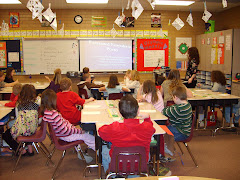The lesson plan that I have chosen to use is based on the different types of earthquakes and how they affect the Earth's surface. The lesson describes three kinds of faults: lateral fault, reverse fault, and normal fault. In order for the students to remember these types of faults, I would use the chain method. The mnemonic sentence that I made up to help remember this is Lazy Rita Naps. The beginning letter of each of words stands for one of the types of faults (lateral, reverse, and normal). Hopefully this strategy would help students remember these specific terms about faults. Another strategy this lesson employs is that of elaboration. I would use this by relating these faults to existing knowledge they already have. For example, I could relate a reverse fault to an arm wrestle- one hand is pushing up and the other is pushing down. A third strategy for remembering these terms is to create a concept map. The main idea would be "faults" with links to the types of faults. Then arrows would connect to the attributes of each type of fault, such as side-to-side movement for a lateral fault.
This lesson supports cognitive learning. For the beginning of the lesson, I would show before and after pictures of the 1906 San Francisco earthquake. This would catch the attention of the students because they would be focused on the stimulus of the strong visual images. The processing of this stimulus into information is done initially in the sensory memory. Students process the stimulus and give it meaning and interpretation, such as the meaning that earthquakes change the Earth's surface in dramatic ways. This is known as perception. As we discuss and demonstrate the different types of faults, this knowledge will be in the students' working memories, which is where the information is that you are focusing on at a specific time. As we work on the mnemonics and connecting new knowledge to previous knowledge, hopefully the short-term knowledge about faults will be transferred to long-term memory where the students will be able to access it in the future. Through this lesson, the students will be able to know that earthquakes change the surface of the Earth, which is an example of declarative knowledge. This is how the lesson can be applied from a cognitive learning viewpoint.
Technology In The Classroom
16 years ago

You provide a concise, accurate explanation of how to teach these concepts from a cognitive standpoint. By way of comments, I think it's good that you use both a mnemonic as well as elaboration and concept mapping. The mnemonics help with the lower-level remembering, but the concept map and elaboration helps create semantic connections, and as I mentioned in class, the nature of long-term memory seems to be semantic.
ReplyDelete